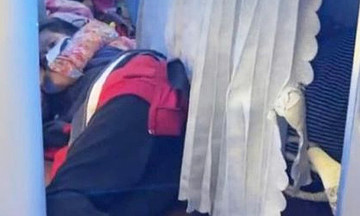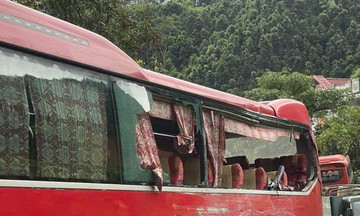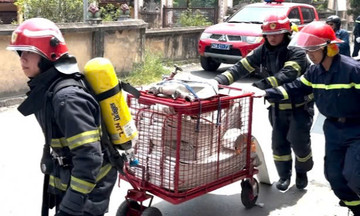According to the Vehicle Emissions Control Plan, starting in 2026, the city will establish a low emission zone (LEZ) in the central area, including the older districts: 1, 3, 5, 6, 8, 10, 11, Binh Thanh, Tan Binh, Tan Phu, and Phu Nhuan. The zone will be bordered by 15 bridges and 17 main roads. This area has about 3.2 million residents, with over 9.2 million trips daily, and frequently records PM2.5 and PM10 levels exceeding standards.
The proposed roadmap is to first restrict commercial motorcycles that do not meet Euro 2 standards and commercial cars below Euro 4 from entering the LEZ in 2026. Heavy diesel trucks will be completely banned. From 2027 to 2032, the restriction will apply to all motorcycles below Euro 2 and cars below Euro 4. After 2032, the city will consider raising emission standards and expanding the restricted area.
 |
The central area of the city proposed as the LEZ. Graphics: Hoang Khanh |
Associate Professor Dr. Nguyen Hong Quan, Director of the Institute for Circular Economy Development Research, Ho Chi Minh City National University, said the green transition and pollution reduction are inevitable trends, bringing economic and social benefits. However, he said, the policy needs to clearly recognize challenges and have specific solutions.
"The biggest difficulty is controlling and identifying vehicles that meet emission standards to enter the center. Vietnam also has no regulations requiring motorcycle inspections," Quan said, adding that with millions of motorcycles in Ho Chi Minh City, inspecting them to attach circulation labels is technically infeasible, expensive, and difficult to distinguish vehicles of residents within the zone from those entering from outside.
According to this expert, if only vehicles inside the zone are restricted while those from outside can still enter without any identification, control will become ineffective. In addition, when gasoline vehicles are restricted, people may not necessarily switch to electric vehicles, but may walk, cycle, or use public transport. However, Ho Chi Minh City’s green transport infrastructure and public transport are still limited. The year-round hot weather, lack of greenery, and covered walkways are issues that need to be addressed.
To implement the project, Quan suggested Ho Chi Minh City can learn from the experiences of many countries. In Germany, the low emission zone is managed with clear emission standards, allowing only vehicles meeting Euro 4 or 6 standards to enter. Vehicles with lower standards can install emission filters instead of being forced to buy new vehicles, helping to reduce costs. Germany also has a widespread public transport system, along with park-and-ride lots at the edge of the restricted zone, and uses technology for control instead of checkpoints. "The strong fines make people think twice," he said.
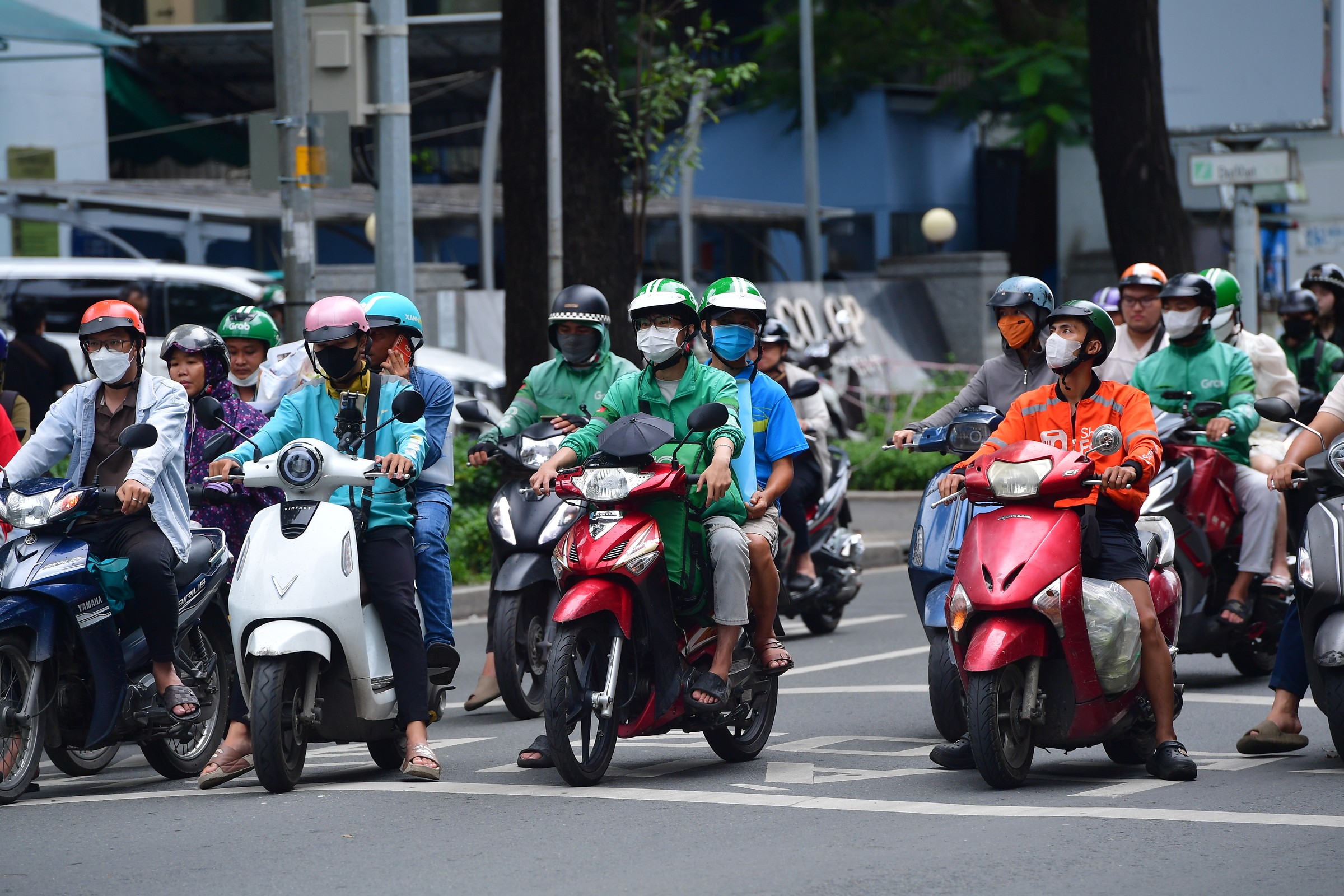 |
Drivers of technology car companies running in the center of Ho Chi Minh City. Photo: Thanh Tung |
Associate Professor Dr. Nguyen Hong Quan noted that in places where low emission zones are applied, the fresh air attracts investors and improves lives, making people see the benefits and comply. For Ho Chi Minh City, he proposed a step-by-step roadmap with an initial phase of 1 to 3 years to encourage conversion, making it mandatory only when infrastructure and policies are ready.
Policies should categorize groups, providing financial support and incentives for low-income people and residents within the restricted area, and encouraging electric vehicle rental models to reduce the burden of new purchases for technology drivers. Ho Chi Minh City can also learn from Singapore by building covered walkways on pedestrian routes to reduce the impact of the weather.
Pham Mi Sen, Captain of the Grab Drivers’ Doan Ket Team, said drivers are ready to switch from gasoline to electric vehicles to enter the low emission zone, but "policy information needs to be transparent, with clear implementation grounds to create consensus."
According to Sen, the current conversion stems from the desire of the authorities, not the needs of vehicle owners, so 0% interest rate support should be provided for those borrowing to buy vehicles. The charging and battery swapping station system must be heavily invested in, "easy to see and readily available, not having to switch vehicles first and then find a place to charge". Support policies should apply to all car companies, allowing drivers to choose suitable vehicles. At the same time, because vehicles are large assets, fire and explosion insurance is needed for peace of mind during operation.
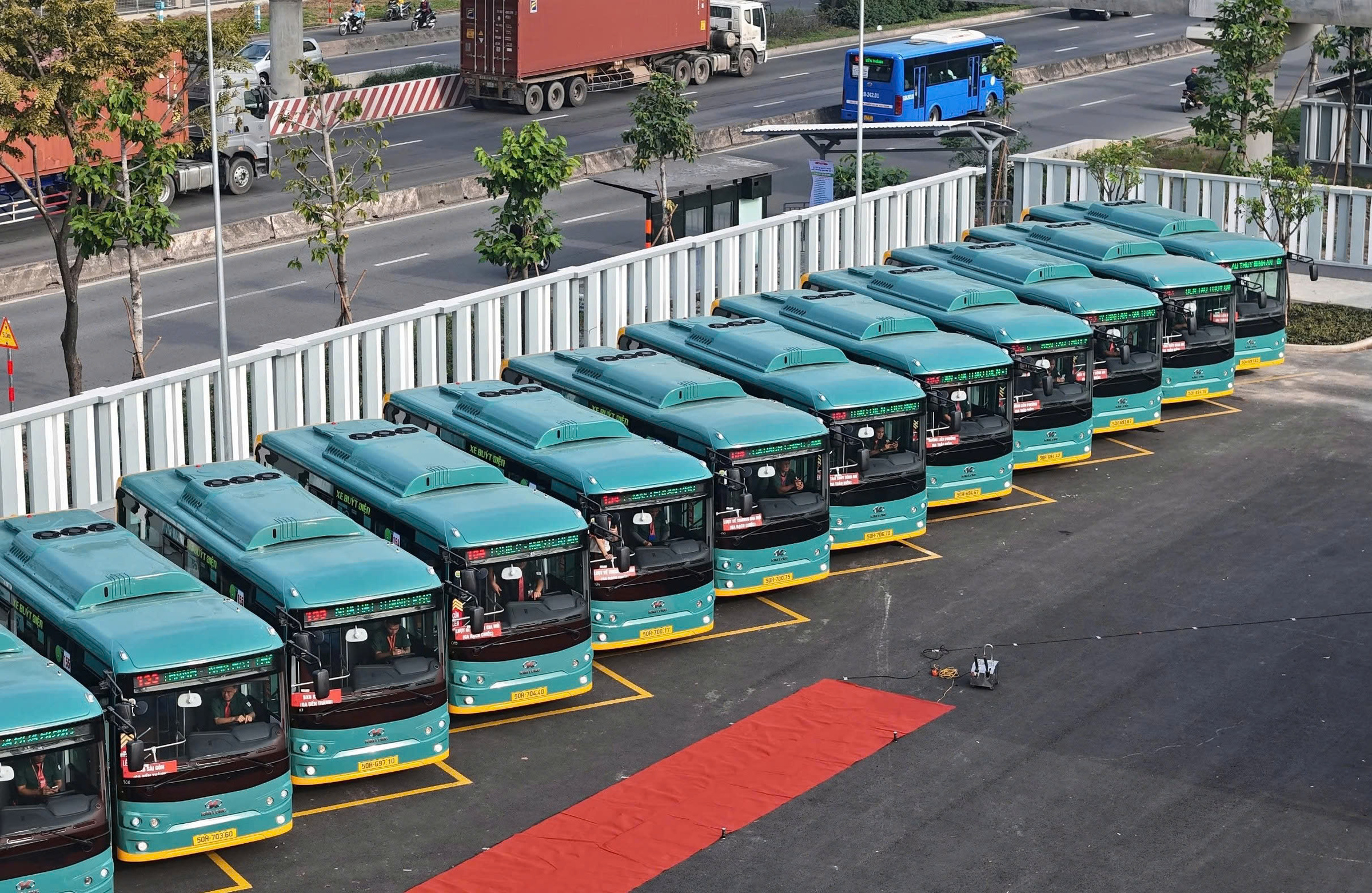 |
Electric buses connecting Ben Thanh - Suoi Tien Metro put into operation at the end of 2024. Photo: Giang Anh |
Meanwhile, Bui Van Quan, Chairman of the Ho Chi Minh City Goods Transport Association, affirmed that the green transition is an inevitable trend, but accompanying policies must be comprehensive and synchronized to help people and businesses readily participate.
He said that, in addition to developing public transport, the city needs to prepare power sources and charging stations, and promptly issue standards and regulations for the charging station system to encourage socialized investment and reduce the burden on the budget.
At the same time, the city needs more policies to attract businesses to produce and supply electric vehicles, creating product diversity and price competition, helping people, especially low-income groups, easily access them. Transport businesses also need a "slow roadmap" to adapt, along with tax incentives and initial cost support.
According to Bui Hoa An, Deputy Director of the Department of Construction, public transport will be invested in according to a roadmap. Relevant units are developing charging station standards to ensure safety and compatibility with many types of vehicles, and researching models for exchanging and handling used batteries. The Department is continuing to collect opinions to complete the project for approval.
Le Tuyet - Giang Anh









